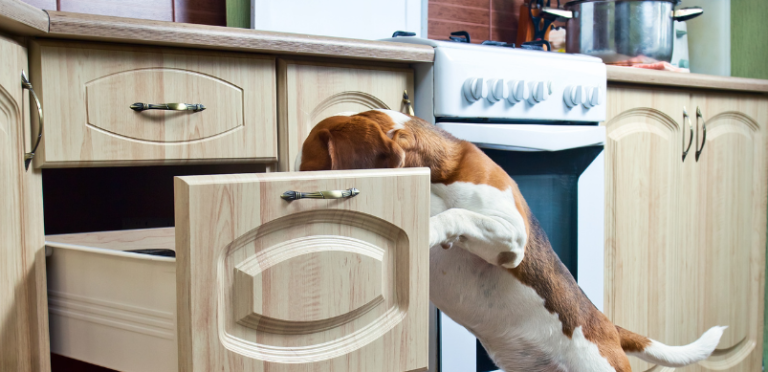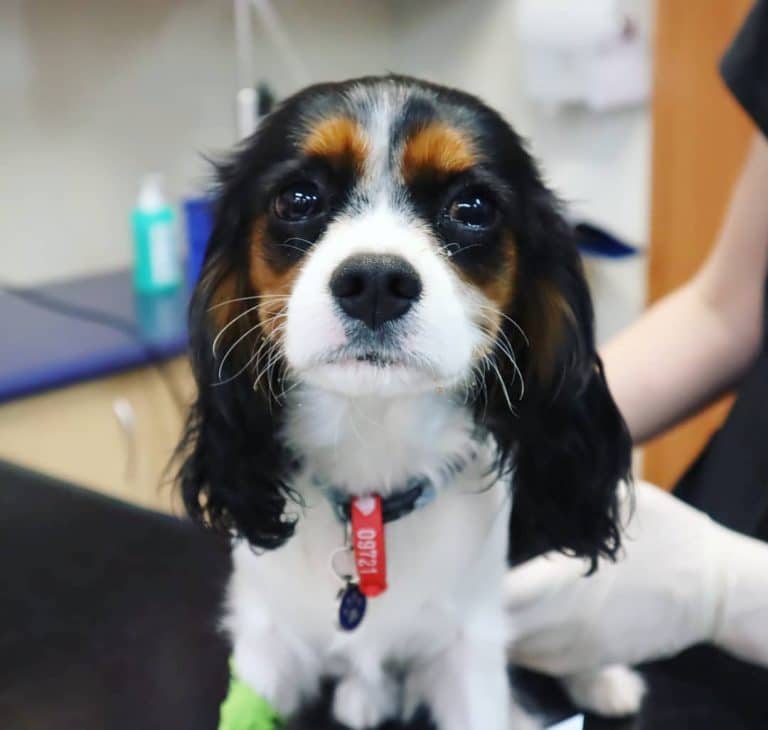Dog Blood Donation (all your questions answered)
Whether you’re a seasoned blood donor, occasionally contribute, or even shy away from the sight of blood, you’re likely aware of the profound impact a single donation can have, potentially saving three lives. Yet, what many overlook is that our beloved companions also have the power to donate blood, playing a crucial role in saving the lives of their fellow furry friends in need. Just like humans, dogs require blood transfusions for various reasons, such as surgeries, trauma, or medical conditions. Blood donation from dogs can be a lifesaving resource, especially in emergency situations where time is of the essence. So, if your furry friend meets the criteria for blood donation, consider registering them as a donor. It’s a small act that can make a big difference in the lives of other dogs and their families.
Despite being a lesser-known fact, pet blood donations are immensely critical, often serving as the deciding factor between life and death for sick pets—a reality our emergency hospitals are all too familiar with. Could your dog be the next hero to step up as a blood donor? Are there concerns about risks? Why might a pet require a blood transfusion? We’re here to address these inquiries and more.
Can dogs be blood donors?
Absolutely. Much like humans, our furry companions can also be blood donors. However, it’s crucial to note that blood isn’t universal across species, meaning human blood isn’t compatible with pets. Interestingly, the first successful recorded blood donation wasn’t between humans but between dogs, dating back to 1665 when Richard Lower performed a transfusion between two dogs, predating human-to-human transfusions.
While human blood donations are urgently needed every 24 seconds in Australia, veterinary hospitals face a critical shortage of suitable donors. To address this, our emergency hospitals have implemented robust blood donor programs to ensure a steady supply of these life-saving products. Yet, owing to the short lifespan of canine blood and its pivotal role in treating various conditions, we heavily rely on the contributions of our remarkable canine heroes who meet the necessary donation criteria to sustain the program.
Why would a dog need a blood transfusion?
Similar to humans, our furry companions may require life-saving blood transfusions for various reasons, including:
- Severe trauma resulting in acute blood loss, for example being hit by a car
- Blood clotting and bleeding disorders
- Toxins that cause bleeding, such as rat bait and some snake bites
- Anaemia (low red blood cell count) – most commonly immune mediated destruction of red blood cells (RBCs) or platelets (without these dogs are at risk of severe bruising and blood loss)
- Cancer
- Blood loss during surgery
Our hospitals have blood on hand at all times to provide this life-saving therapy for our patients because sometimes the difference between life and death is just minutes.
Do dogs have blood types?
Just like humans, dogs possess a diverse range of blood types, with over a dozen known variations, referred to as Dog Erythrocyte Antigen (DEA) types. Among these, DEA 1.1 stands out as the most common. When we analyse your dog’s blood, we can determine their specific blood type based on the antigens present. However, the crucial factor in blood screening is whether it’s positive or negative.
Interestingly, certain dog breeds exhibit a predisposition towards either DEA 1.1 Positive or Negative blood types. Breeds such as Greyhounds, Boxers, Irish Wolfhounds, German Shepherds, and Dobermans are more inclined to have Negative blood types, whereas Golden Retrievers and Labradors are often Positive.
Regardless of your pooch’s blood type, every donation holds immense significance in potentially saving another dog’s life.
Is blood donation safe for a dog?
Our stringent donor selection criteria and screening process ensure the safety of dogs during blood donation, minimising any potential risks. We utilise a local anaesthetic cream to alleviate discomfort, may administer a light sedative to keep your pet relaxed, and our dedicated team closely monitors the donor’s well-being throughout the entire process, promptly halting donation if any signs of distress are observed.
While the majority of dogs experience no adverse effects post-donation, occasional fatigue, similar to humans, may occur. If you notice any unusual symptoms following donation, we urge you to promptly contact our team for assistance.
After donation, it’s advisable for your dog to take it easy for the remainder of the day and resume normal activities gradually the following day. Additionally, providing ample fresh water can aid in their recovery process.
What are the dog blood donation requirements?
- Did you know one in three dogs is able to donate blood?
- What are the requirements for canine blood donors?
Meet Henry, one of our esteemed blood donors pictured alongside his owner and some of our dedicated team members at Perth Veterinary Emergency. We’re actively seeking more heroes like Henry to join our community of incredible blood donors, ensuring we can consistently deliver this life-saving service to our patients in need.
Could your dog have what it takes to be a blood donor?
To qualify for blood donation, your dog must meet the following criteria:
- Healthy
- Weighs at least 25kg
- Between 1-8 years of age
- Up-to-date with vaccinations, worming, and other preventatives
- Has not had a blood transfusion previously
- Has a calm, trusting temperament
- Be capable of lying calmly for 5-10 minutes with their owner present while the donation occurs.
Dogs who are confident, enjoy socialising, and are comfortable with handling typically make excellent blood donors. Even dogs with high energy levels or excitable temperaments can often become successful donors, provided they exhibit a reasonable level of obedience.
However, dogs who are anxious, nervous, wary of new people, or have a fear of veterinary environments are likely to find the donation process stressful. If your pooch falls into this category, we encourage you to support us in alternative ways, such as spreading the word to other pet parents about our blood bank and our ongoing need for donors, or sharing our cause on social media.
Dogs who are confident, enjoy meeting new people, and are happy being handled make for great blood donors.
How often can dogs give blood?
Ideally, dogs can donate blood every eight weeks. However, we meticulously manage our blood bank, and we’ll only request your furry friend to donate when their contribution is needed.
The well-being of our valued blood donors is paramount to us. Before each donation, we conduct thorough veterinary health checks and blood tests to ensure the health and wellness of our donors.
What is the dog blood donation process?
Our blood donation process consists of two main parts. Upon expressing interest in having your pooch become a blood donor hero, our team will reach out to you to organise a meet-and-greet session before any screening or donation takes place.
The meet and greet
During your meet-and-greet session, one of our team members will provide a comprehensive explanation of the entire blood donation process, addressing any questions or concerns you may have. This ensures not only the suitability of your dog but also your comfort and satisfaction with the process before commencement.
In addition to familiarising ourselves with your pooch, our team will assess their suitability as a donor. This entails ensuring they possess a calm and friendly temperament, enjoy social interactions, feel at ease in the clinic environment, and are comfortable with handling. Our aim is to create a positive experience for your pet so they eagerly anticipate their next visit.
During this session, our team will conduct:
- A thorough physical examination to assess their fitness and health status
- Discussion of their medical history with you
- Collection of a small blood sample to complete a comprehensive health check and screen for any tick-borne diseases, which are increasingly prevalent in Australia.
The dog blood donation procedure
The blood donation procedure usually takes about 5 to 10 minutes, and you and your furry friend will be at the hospital for approximately an hour.
Upon meeting the criteria to become a blood donor, our team will reach out to you to arrange a donation appointment that aligns with our blood supply needs. You can stay by your dog’s side throughout the entire process, offering reassurance, affection, and complimentary treats to keep them content.
Your dog’s blood donation appointment comprises four stages, each following the same protocol every time they donate:
- Welcome. On arrival at our hospital, our team will meet you and take you through to our donation room for your pooch to get comfortable and have a play to help them get settled.
- Pre-donation health check. One of our vets will perform a physical examination and a blood test to ensure your pooch is fit and healthy to donate on the day.
- The donation. Once our vet signs off on your pooch’s health check the donation process will start:
- Your dog will be lifted onto the donation bed. They are able to sit or lie, but most dogs prefer to lie and often end up falling asleep.
- A small area of fur on the neck will be clipped and cleaned where the collection will be taken from.
- A local anaesthetic cream will be applied to the area.
- Blood is then collected via the large jugular vein. It will take 5-10 minutes for blood to be taken. We use the same blood collection bags as the Red Cross.
- After the collection, a bandage is placed over the collection site and we are done.
- Thank you. After their donation, your pooch will receive a lot of love from our team as well as lots of treats as our sincere thanks for their hard work.
Following your dog’s donation, we recommend they take it easy for the rest of the day before resuming their normal routine the next day.
What happens to the blood after your dog’s blood donation?
Following the collection of your dog’s blood donation, it undergoes meticulous processing to maximise its life-saving potential. Each donation can save up to three other dogs.
The blood can be utilised in its entirety or divided into different blood products, including packed red blood cells, plasma, and whole blood. These products serve distinct purposes based on the patient’s condition and have varying lifespans.
Whole blood, which has the shortest lifespan of up to 28 days, can be stored as collected. Through centrifugation, the blood is separated into plasma and packed red blood cells. The red blood cells are then combined with a preserving solution, extending their lifespan to 35 days. Plasma is rapidly frozen, providing a lifespan of up to 1 year, although it can last up to 5 years in specific situations, such as cases of rodenticide toxicity.
All blood products are diligently stored and monitored in our specialised blood bank, ensuring quality control through continuous temperature monitoring of the refrigeration and freezing units.
If you believe your dog could be a potential blood donor hero, we encourage you to register their details on our Canine Blood Donor page.
If you suspect your dog is in pain, please immediately contact your local veterinarian or the nearest emergency hospital.
Please consult our Pet Emergency Guide for comprehensive information on handling pet emergencies and knowing what to do.



